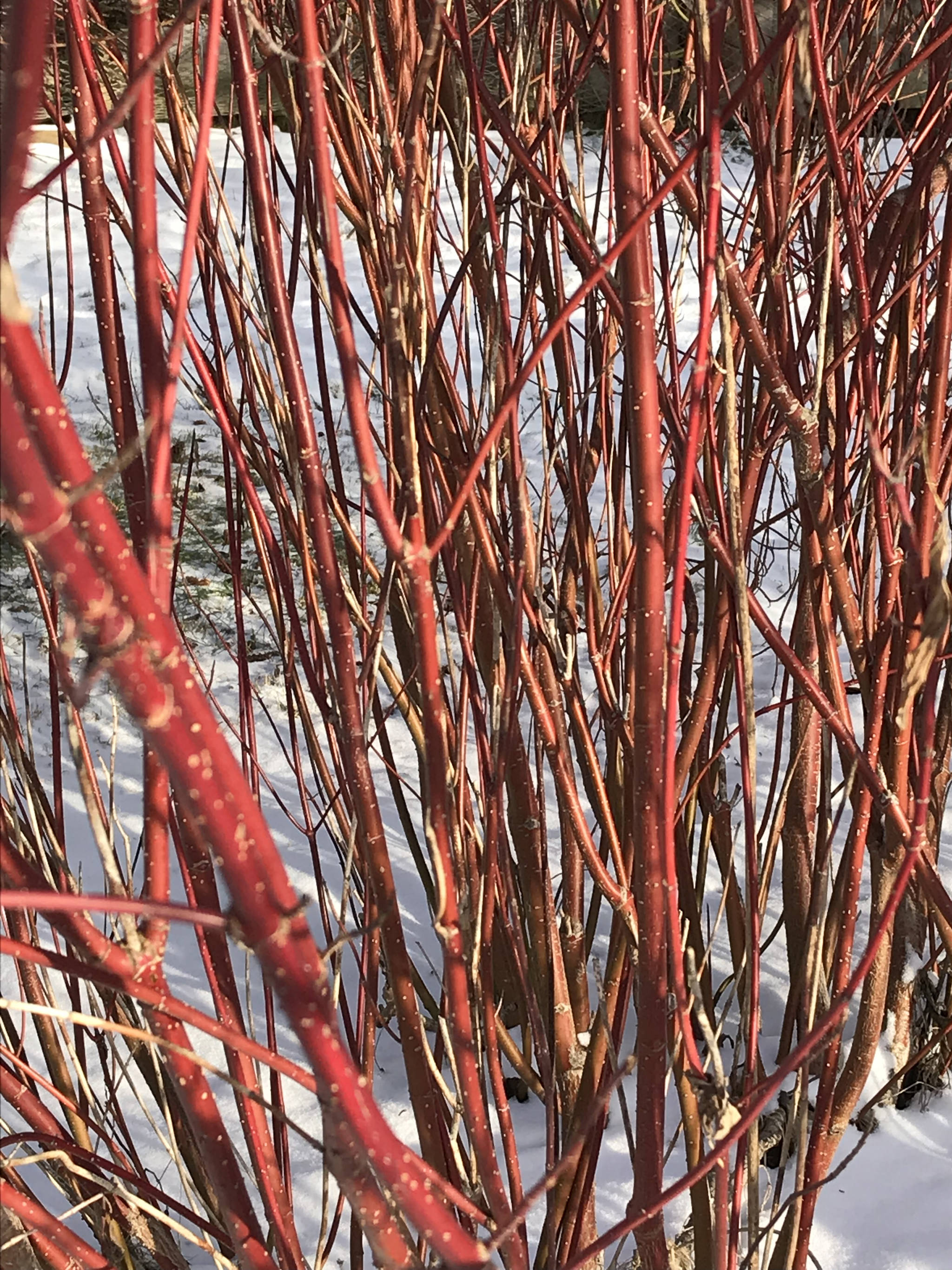Red twig dogwoods. If you don’t have any of these, take action. The are readily and locally available. Be thinking about where you want to put them. The three planted in the east garden have gotten rather huge: 8 feet tall by 8 feet wide. That’s a lot of real estate. But the glory of their red branches is not to be underestimated. Be sure to pick a spot where you can see them from inside the house. They will give your late winter attitude a boost.
Keep in mind that they will need pruning and this is the perfect time of year to accomplish that. By cutting out old canes new ones will come on in the spring with more vibrant color. And color is what you are after.
My current dilemma is dwarf red twig dogwoods. That’s right: dwarf, and where to get them. Yes, I can mail order them and I have found a source, but I have chosen to ask one of our local nurseries to sleuth them out for me, hopefully from a distributor they already work with. This is in accordance with my ongoing mantra to ‘shop locally’. I’ll see how it goes.
Now, these three dwarf shrubs will play an integral roll in simplifying one of the perennial beds that I have been struggling with approximately forever. I was inspired by a conversation with avid gardener Teena Garay. She has planted willows with different colored branches for winter interest and is appreciating the variety.
Looking out the front windows onto the garden I’m faced with somewhat of a mess all winter long. Last year the Magic Fountain delphiniums that I started from seed were in their second year and I was so looking forward to their three foot height and gorgeous blooms. That in itself would have made them worth it. Well, six feet and counting. No. Wrong. Rats. They will come out and be replaced with these three shrubs that should be three feet high and three feet wide and very red all winter long, long, long. There is already a dwarf Korean lilac at one end and a Miss Kim on the other. These will fill in the space between. The asiatic lilies that are thriving in this bed will carry on, as will the variety of spring bulbs. I’ll divide this and that to fill in the spaces and underplant. And — I will have to wait a couple of years for the shrubs to reach maturity, which will require patience. In the meantime the bed may look a tad sparse. Rather that then towering delphiniums.
All this talk of shrubs brings me to the topic of Year of the Bird. Instigated by National Geographic with Kachemak Bay Birders enthusiastically getting on board, this national movement is raising awareness of the importance of avian lives.
When we bought this property 20 years ago it was a meadow that had been part of the Anderson homestead. Once it was cleared of alders to build the house, the first thing we did was plant trees and shrubs, even before we moved in. The intention was to make a habitat for birds and whatever else needed a haven. We have succeeded. We have one very small bird feeder that John monitors daily, putting about a cup of hulled medium sunflower seeds. This is enough to attract an amazing complement of bird life. The smaller seed discourages the bully birds aka Stellar jays and magpies from cleaning out the feeder in a heart beat. There is also drama. We had a sharp shinned hawk perch in the mock orange yesterday. The redpolls, chickadees, juncos, fox sparrows, what-am-I-forgetting?, cleared out pronto. So far Jade the Dog has discouraged cats.
If you have yet to do any landscaping on your property think about shrubs. There will be a wide variety available as the season progresses and don’t forget native plants — alders and elders aren’t all that bad, really, they certainly don’t need tending, and the moose ignore them more or less.
Rosemary Fitzpatrick is a longtime Homer gardener. She has been writing Kachemak Gardener since 1990.



